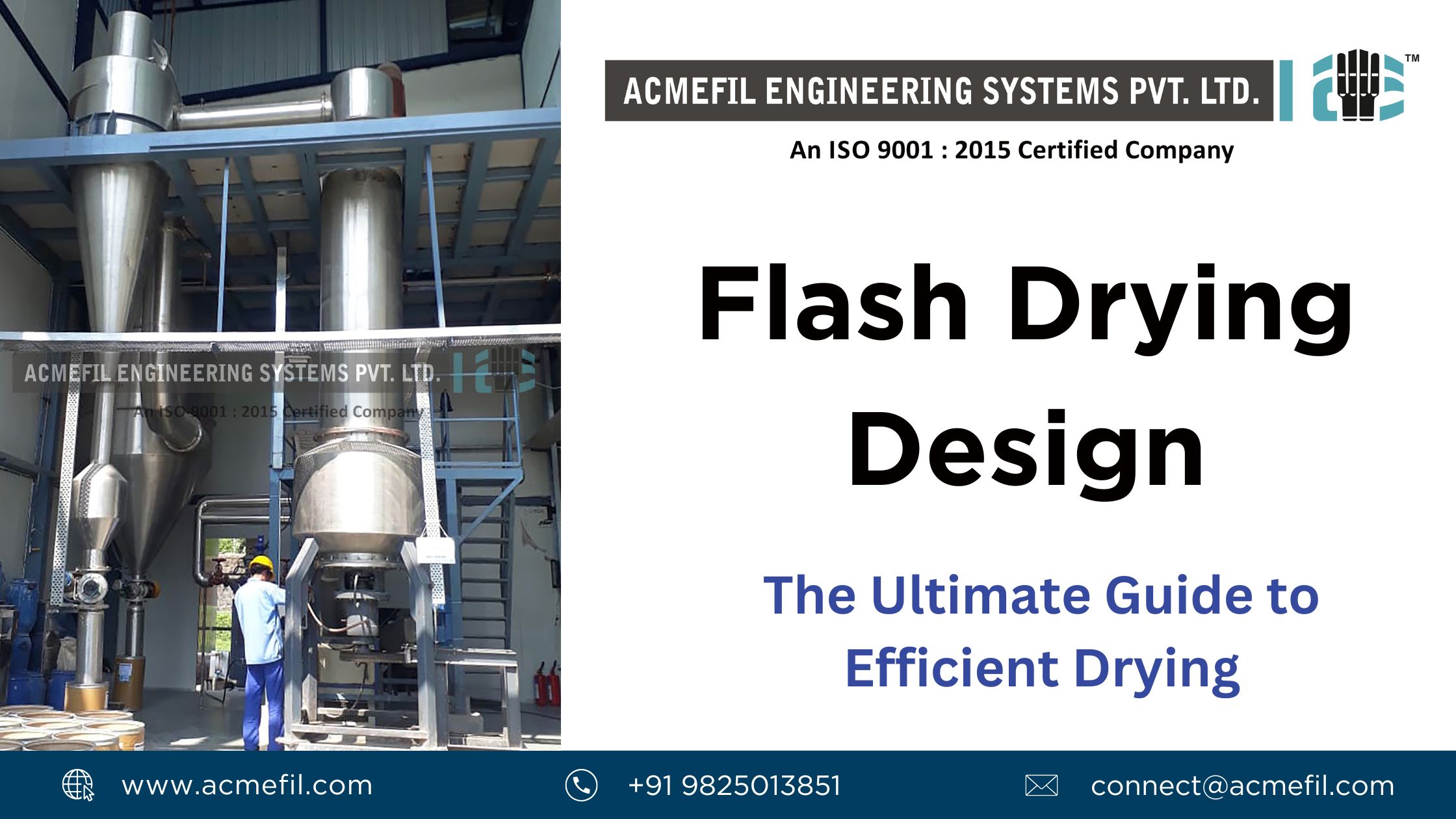Are you looking to optimize your industrial drying processes? Understanding flash dryer design is crucial for achieving efficient and cost-effective drying solutions. In this comprehensive guide, you’ll discover the ins and outs of flash dryer design, from fundamental principles to expert tips that can enhance your operations. Whether you’re new to flash drying or seeking to improve your existing system, this guide will provide valuable insights to help you make informed decisions.
What Is a Flash Dryer?
A flash dryer is an industrial drying system used to reduce the moisture content of particulate materials rapidly. It operates by exposing wet materials to a stream of hot air, causing instantaneous evaporation of moisture. Flash dryers are widely used in various industries, including:
- Food Processing: Drying spices, starches, and grains.
- Chemical Industry: Drying polymers, pigments, and fertilizers.
- Minerals Processing: Drying clays, sands, and ores.
Understanding the flash dryer design is essential for tailoring the system to your specific material and process requirements.
Key Components of Flash Dryer Design
A well-thought-out flash dryer design includes several critical components that work together seamlessly:
1. Drying Chamber
The drying chamber is where the wet material interacts with the hot air. Its design affects the residence time and drying efficiency.
2. Air Heating System
This system heats the air to the required temperature, often using gas burners or steam heaters.
3. Feed Mechanism
The feed mechanism introduces the wet material into the drying chamber. It must ensure uniform distribution to prevent clumping.
4. Cyclone Separator
After drying, the cyclone separator separates the dry material from the exhaust air stream.
5. Exhaust System
The exhaust system removes moist air and maintains the necessary airflow within the dryer.
Principles of Flash Drying
Understanding the principles behind flash drying is vital for effective flash dryer design.
Heat and Mass Transfer
The core of flash drying involves heat transfer from the hot air to the wet material and mass transfer of moisture from the material to the air.
Residence Time
Flash dryers have a short residence time, usually a few seconds, which makes them suitable for heat-sensitive materials.
Moisture Evaporation
Rapid moisture evaporation occurs due to the high temperature and large surface area of the particles.
Designing a Flash Dryer: Critical Factors
When designing a flash dryer, several critical factors must be considered:
Material Properties
- Moisture Content: Initial and desired final moisture levels.
- Thermal Sensitivity: How the material reacts to heat.
- Particle Size and Distribution: Affects drying rate and airflow.
Drying Air Properties
- Temperature: Higher temperatures increase drying rates but may damage heat-sensitive materials.
- Velocity: Must be sufficient to suspend particles without causing attrition.
Equipment Sizing
Proper sizing ensures optimal performance and energy efficiency.
Steps in Flash Dryer Design
Designing an effective flash dryer involves several key steps:
1. Material Analysis
Understand the properties of the material you intend to dry, including moisture content and thermal sensitivity.
2. Selecting Drying Parameters
Determine the optimal air temperature and velocity based on material properties.
3. Equipment Sizing
Calculate the required dimensions of the drying chamber, cyclone separator, and other components.
4. Energy Efficiency Considerations
Incorporate features that reduce energy consumption, such as heat recovery systems.
Advantages of Flash Dryer Design
Implementing a well-designed flash dryer offers numerous benefits:
- High Thermal Efficiency: Maximizes energy use for drying.
- Rapid Drying Times: Increases throughput and productivity.
- Compact Equipment Footprint: Saves valuable floor space.
Challenges and Solutions in Flash Dryer Design
Despite their advantages, flash dryers present certain challenges:
Handling Heat-Sensitive Materials
Solution: Use lower air temperatures and shorter residence times to prevent degradation.
Preventing Agglomeration
Solution: Ensure proper feed dispersion and maintain appropriate air velocities.
Energy Consumption Optimization
Solution: Implement heat recovery systems and optimize airflow patterns.
Expert Tips for Optimizing Flash Dryer Design
Enhance your flash dryer design with these expert tips:
Implement Advanced Control Systems
Utilize automation and control systems to monitor and adjust drying parameters in real time.
Regular Maintenance Practices
Schedule routine inspections and maintenance to prevent downtime and extend equipment life.
Customize Designs for Specific Applications
Tailor the design to meet the unique needs of your material and process requirements.
Flash Dryer Design and Environmental Considerations
Modern flash dryer designs must also address environmental concerns:
Emission Controls
Incorporate filters and scrubbers to reduce particulate emissions.
Energy-Saving Technologies
Use energy-efficient components and consider renewable energy sources for heating.
Frequently Asked Questions About Flash Dryer Design
1. How Does Flash Dryer Design Affect Product Quality?
A. An optimized design ensures uniform drying, preserving product quality and consistency.
2. What Materials Are Best Suited for Flash Drying?
A. Materials with small particle sizes and moderate moisture content are ideal candidates.
3. How Can I Improve the Energy Efficiency of My Flash Dryer?
A. Implement heat recovery systems and optimize operating parameters to reduce energy consumption.
Conclusion
Understanding and implementing effective flash dryer design is crucial for optimizing your drying processes. By considering material properties, selecting appropriate parameters, and incorporating energy-efficient features, you can achieve superior drying performance.
Ready to Take Your Drying Processes to the Next Level?
Explore Acmefil’s expert solutions and resources to optimize your flash dryer design. Our team of professionals is here to help you achieve efficient and cost-effective drying operations. Contact us today to learn more!




